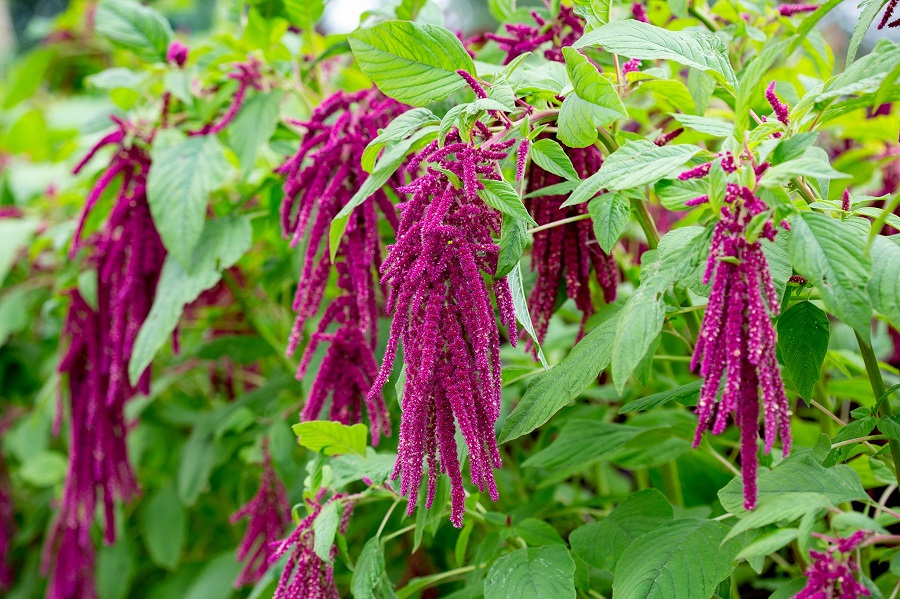Amaranth

Here are some key features and uses of Amaranth:
- Edible Leafy Vegetables: Certain species of Amaranthus, such as Amaranthus tricolor (also known as Chinese spinach or edible amaranth), Amaranthus dubius (red spinach), and Amaranthus lividus (purple amaranth), are cultivated as leafy vegetables and consumed in various parts of the world. The leaves are rich in vitamins, minerals, and antioxidants, making them a nutritious addition to diets.
- Grain Amaranth: Some species of Amaranth are grown for their seeds, which are commonly referred to as amaranth grains. These grains are gluten-free and have a high protein content, making them a valuable source of nutrition for people with gluten sensitivities and vegetarians/vegans.
- Ornamental Plants: Certain Amaranth species, particularly those with striking and colorful foliage or flower structures, are grown as ornamental plants in gardens and landscapes.
- Cultural and Traditional Uses: Amaranth has been cultivated and used as a food source by various cultures for thousands of years. Some indigenous communities in the Americas have also used this species for religious or ceremonial purposes.
As with any plant that is intended for consumption, it’s essential to identify the specific species correctly and ensure it is safe for consumption or use. Additionally, while some Amaranthus species have beneficial uses, others can be considered as invasive weeds in certain regions. Always consult reliable sources and expert advice before using any plant for culinary, medicinal, or ornamental purposes.



Leave a Reply